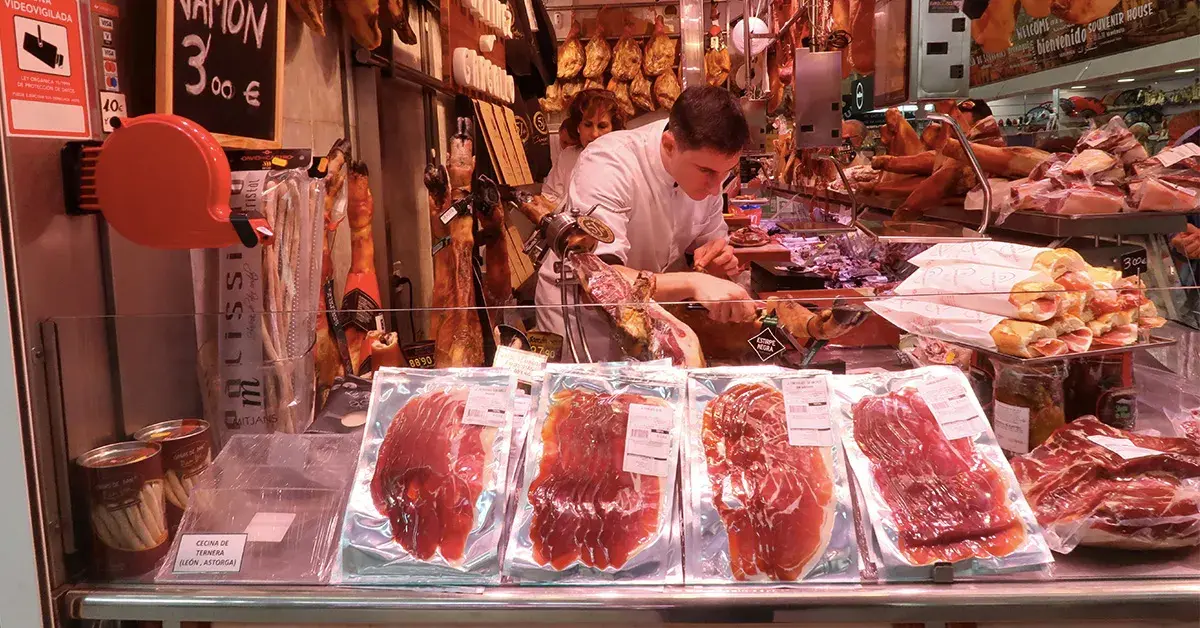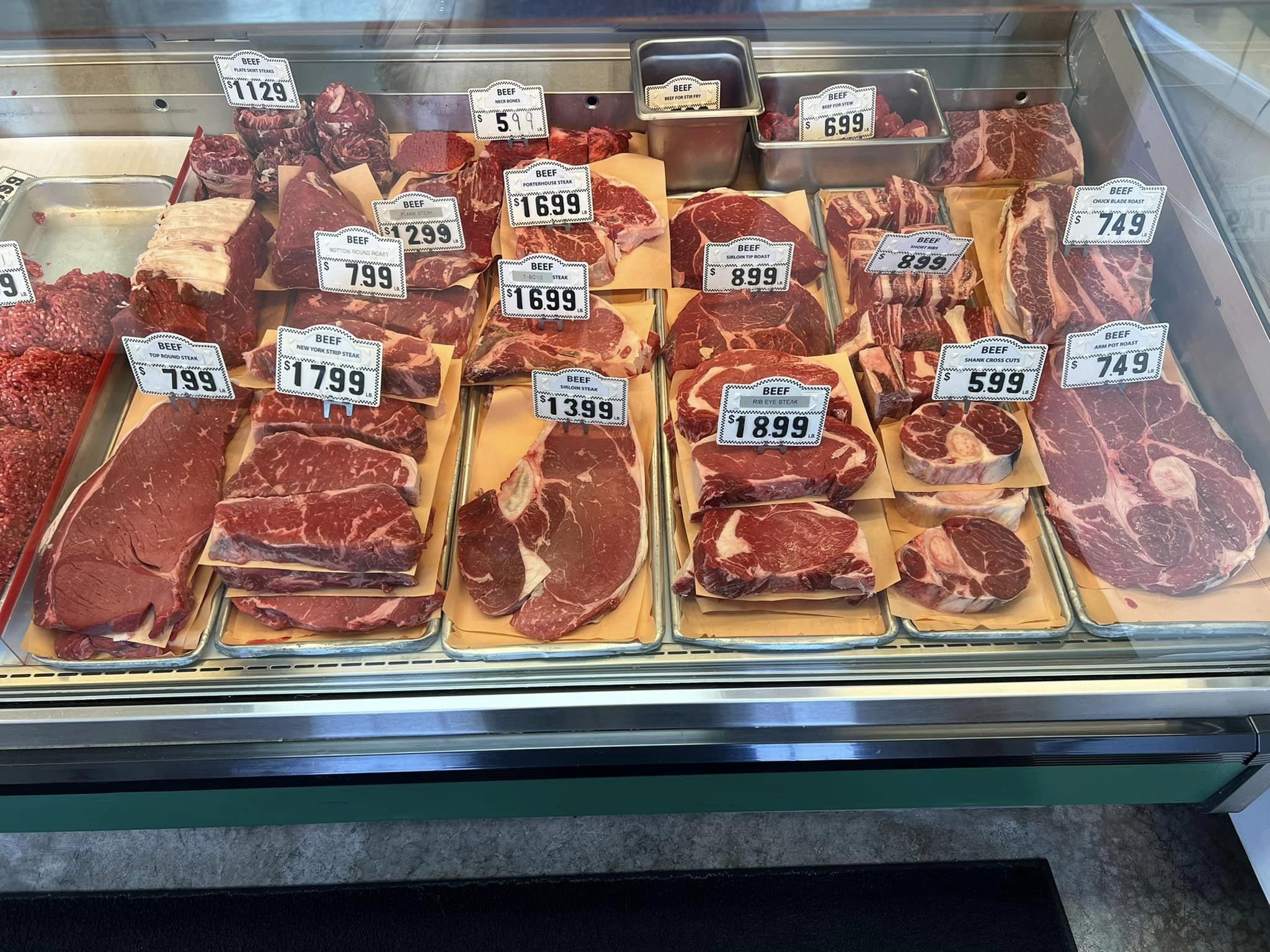Why Citizens Love Bagley Farms Meat Market Edwardsville IL for Their Meat Buying
Why Citizens Love Bagley Farms Meat Market Edwardsville IL for Their Meat Buying
Blog Article
Uncover the Art of the Butcher's Cut in a Modern Meat Market
In the ever-evolving landscape of modern meat markets, the butcher's cut has actually transcended its standard origins, merging age-old craftsmanship with modern practices. What really establishes the contemporary butcher apart is their ability to build a deeper link between consumers and the beginnings of their meat.
Development of Butchery Strategies

The mid-20th century saw butchery methods additionally fine-tuned by clinical insights into muscular tissue biology and meat aging, enhancing both inflammation and taste. Advancements like vacuum cleaner packaging and refrigeration expanded product shelf-life, allowing butchers to diversify offerings and enhance high quality control. This duration also noted the increase of customized tools, such as band saws and meat slicers, which boosted accuracy and performance in meat processing.
The 21st century has introduced electronic modern technology right into the butchery realm. Electronic systems currently aid in monitoring pet provenance and enhancing cuts to fulfill particular customer preferences. Furthermore, a rebirth in artisanal butchery has arised, blending standard skills with modern expertise to satisfy consumers seeking ethical and lasting meat alternatives. This advancement highlights a vibrant interaction in between tradition and development, meeting modern demands while preserving the craft's heritage.

Recognizing Meat Cuts

Understanding the details of meat cuts is important for both butchers and consumers seeking top quality and value. Each cut originates from a different part of the animal, giving one-of-a-kind tastes, textures, and cooking methods. Mastery of these distinctions not just improves cooking experiences but likewise makes best use of the energy of each carcass. For butchers, specific cuts mirror ability and regard for the craft, ensuring minimal waste and optimal return.
The primary classifications of meat cuts include primal, sub-primal, and retail cuts. Butchers then damage these down further into sub-primal cuts, before lastly creating retail cuts readily available to customers, like ribeye or tenderloin.
Comprehending muscle structure is essential; muscular tissues utilized more often by the animal tend to be tougher and are best matched for slow cooking approaches, while less-used muscle mass, like those discovered in the loin, are more tender and perfect for cooking or roasting. Familiarity with these differences empowers customers to make enlightened options, enhancing their cooking ventures.
Selecting Top Quality Meat
Selecting the appropriate meat involves more than simply selecting an aesthetically attractive piece from the display. The art of choosing high quality meat calls for a critical eye and knowledge of certain attributes that signify quality and excellence. To start with, take notice of the color; beef should have an intense, cherry-red shade, while lamb should show a soft pink tone, and pork a pale pink. This indicates the meat is fresh and hasn't been subjected to oxygen for also lengthy.
Secondly, take into consideration the marbling, which refers to the white streaks of fat within the muscular tissue. Proper marbling is a key indicator of tenderness and flavor, as it thaws during food preparation, enhancing the meat's juiciness. Remember, higher marbling frequently associates with exceptional top quality cuts, such as USDA Prime.
Structure is another critical element; meat needs to really feel strong to the touch, not slimed or excessively soft. Furthermore, bear in mind the aroma. Fresh meat needs to have a clean, neutral smell, without any kind of sour or visit this site right here off-putting smells.
Matching Cuts With Food Preparation Methods
Efficiently pairing cuts of meat with the suitable food preparation techniques is necessary for accomplishing optimal taste and appearance. These methods improve the meat's all-natural flavors and ensure a juicy finish.
Alternatively, tougher cuts like brisket and chuck roast are rich in collagen, which damages down right into gelatin when cooked slowly. These cuts are optimal for braising or slow roasting, allowing the meat to soften gradually and create deep, intricate tastes. In a similar way, cuts such as short ribs and pork shoulder fare well with slow-cooking approaches, where expanded cooking times change their robust structures into delicious dishes.
Lamb shanks and oxtail, which call for extended cooking to tenderize, are excellent candidates for cooking or sluggish simmering. These techniques coax out rich, hearty tastes while maintaining wetness. By recognizing the special attributes of each cut, cooks and home chefs alike can elevate their culinary creations, making sure each meal is both pleasing and unforgettable.
The Butcher's Role Today
Browsing the developing landscape of the modern-day meat market, the butcher's function today extends past plain prep work of cuts. Contemporary butchers are cooking artisans, instructors, and advocates for lasting techniques. They link the gap between the ranch and pop over to this site the fork by making certain honest sourcing, recognizing pet husbandry, and prioritizing openness in the supply chain. This change shows the expanding consumer demand for high quality over quantity, where provenance and animal welfare are vital.
Along with crafting specific cuts, butchers currently involve straight with clients, using cooking suggestions and customizing selections to suit private demands and choices. Their expertise in meat aging, marbling, and taste profiles encourages customers to make enlightened choices, boosting their culinary experiences. This tailored service exemplifies the butcher's advancing role as a trusted expert in the kitchen.
In addition, butchers are critical in minimizing waste, making use of entire animals to create diverse items such as sausages and supplies - bagley farms meat market edwardsville il. This extensive technique not just respects the animal but also aligns with modern sustainability goals. This way, the contemporary butcher embodies both custom and development, adapting to an ever-changing market while maintaining More Info the creativity and integrity of their craft

Verdict
The modern butcher's craft delicately weaves traditional strategies with contemporary advancements, stressing sustainable techniques and honest sourcing. Proficiency in recognizing varied meat cuts and top quality indicators empowers butchers to provide educated recommendations, lining up details cuts with optimal food preparation methods. This proficiency not only boosts cooking experiences but additionally reinforces the connection in between consumers and the beginnings of their food. By recognizing historical methods while accepting modern demands, the butcher's function stays essential in today's sophisticated meat market.
Report this page